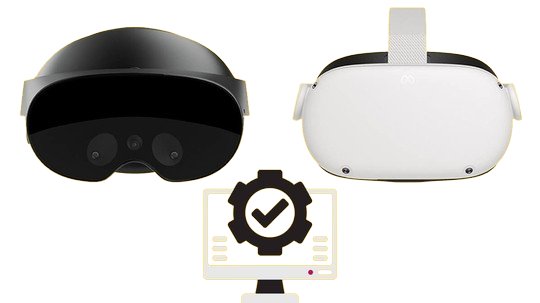FORKLIFT SIMULATOR
SANLAB Learning's forklift simulator trains operators. It focuses on safety and cost efficiency. Provides a complete and efficient training environment. Simulator has realistic controls, diverse scenarios, and dynamic feedback. Offers various training options for different needs. With VR support and motion platforms, it offers a flexible, immersive learning experience.
Forklift Simulator Training for Safe and Effective Use
SANLAB Learning’s forklift simulator creates a secure training environment for operators who work in hazardous conditions. The simulator provides training in key skills. It covers mast operation, maneuvering, and load handling. VR integration and detailed scenarios allow for safe, effective forklift training. Operators avoid the risks of real-world operations.
This training method cuts costs and removes safety risks. It lets operators practice complex techniques in a controlled environment.
Simulator has many versions: stationary, 3DOF, 6DOF, and desktop. They meet different training needs and realism levels.
Forklift simulator mimics a real forklift control station. It has a seat, control levers, pedals, and many screens showing a virtual world.
Scenerios
Slalom
Obstacle Driving
Warehouse Loading
Balls on Cones
Quick Attachment
Truck Unloading

Advanced Features for Realistic Forklift Simulator Training
Enhanced 3D Visuals:
The forklift simulator employs high-quality 3D graphics to create lifelike visual environments. Operators face scenarios with different working conditions, weather, and times of day. This enhances the training's realism.
Full-Scale Cabin Option:
The simulator has a cabin that replicates a real forklift's controls, like the steering wheel, pedals, and levers. This setup enhances the realism of the training experience.
Accurate Physical Modeling:
SANLAB Learning's simulator calculates engine RPM, torque, and hydraulic pressure with precision. It gives operators a detailed view of vehicle performance and system functions.
Forklift Controls with Real Equipment:
Simulator replicates the exact steering, pedals, and levers of a real forklift. This lets operators learn the equipment before using the machine.
VR Integration for Immersive Experience:
Our simulator works with VR devices like Oculus Rift and HTC Vive. It lets you train in a VR environment. VR-trained operators are better at fieldwork, especially in crises.
Various Motion Platform Options for Forklift Simulator VR Training
Forklift sim offers multiple motion platform options to meet different
training requirements. They include stationary, 3DOF, 6DOF, and desktop models. These models offer different levels of realism and control to enhance training effectiveness.
Motion Platform Options of Forklift Sim VR:
• Stable Simulators — Ideal for learning basic control systems without motion feedback.
• 3DOF (Pitch, Heave, Roll) — Provides basic movement feedback, perfect for entry-level training.
• 6DOF (Pitch, Heave, Roll, Yaw, Surge, Sway) — Delivers a highly realistic driving experience by simulating full motion conditions.
• Desktop Version — A compact solution offering extensive training capabilities without requiring a full motion platform.
Motion Platform Response Strength Adjustment:
This interface allows you to adjust the real response strength of the motion platform in the VR forklift simulator.
• Low — Provides a softer and lighter simulation experience with reduced response strength.
• Mid — Offers a balanced experience with moderate response strength for realistic feedback.
• High — Delivers the closest performance to real-world conditions with strong and effective feedback.
Additional Features:
• Power On/Off — Enable or disable the motion platform as needed.
• Reset — Restore the motion platform to its default settings.
• Test Start — Begin a diagnostic test to ensure the motion platform is functioning correctly.
• Test Stop — Halt the diagnostic test and return to normal operation.
These settings and features help customize the simulator's feedback. They match real conditions, ensuring effective and realistic training.


Learn More
Download Product Catalogue


Comprehensive Training Scenarios for Forklift Simulators
Forklift sim includes a variety of scenarios designed to sharpen operational skills in different environments.
Course Highlights:
• Slalom — Enhances operator skills in maneuvering around obstacles with precision, focusing on tight turns and maintaining control.
• Slalom Circle — Focuses on maintaining accurate control in circular driving, testing the operator’s ability to smoothly navigate continuous loops.
• Obstacle Driving — Provides practice in navigating complex and unpredictable obstacle courses, improving situational awareness and quick decision-making.
• Warehouse Loading — Specializes in improving efficiency when loading in confined warehouse environments, focusing on precision and speed.
• Balls on Cones — This scenario develops attention and precision skills.
• Quick Attachment — This exercise increases the operator's ability to make quick and effective equipment changes.
• Truck Unloading — Focuses on safely and quickly unloading trucks, reducing the risk of accidents or damage to the cargo.
Enhanced Training with VR Integration
The simulator's VR integration enhances training. It allows for immersive learning. Instructors can track performance in real time. This lets them give feedback on strengths and areas for improvement.
Versatile Camera Angles for Forklift Simulator Training
Camera angles let operators view the machine and its surroundings. This ensures safe and efficient use. Our simulator offers a range of camera angles to provide comprehensive training. The realistic camera views in the forklift sim VR include:
• Operator Perspective Camera
• External Camera
• Load Camera
• Overhead View Camera
• Rear View Camera
• Trainer Cameras
Employing these six camera angles makes training more engaging and realistic. This approach helps both operators and trainers. It lets operators master machine control from different viewpoints. This setup is particularly useful for enhancing skills with heavy machinery.
Forklift Simulator Performance & Reporting
Real-Time Monitoring: Instructors can observe operator performance in real-time, evaluating key metrics such as maneuverability, precision, and safety. This enables quick feedback to help operators refine their skills.
Detailed Reporting: The simulator provides comprehensive reports including:
• Date of Scenario: When the scenario was conducted.
• Scenario Creator: Designer or team responsible.
• Average Score: Performance score.
• Task Completion Metrics: Accuracy and efficiency of task completion.
• Time Usage: Total time spent.
• Error-Free Operation: Performance without errors.
• Metrics Explanation: How metrics are calculated and assessed.
These features ensure effective training by providing a detailed analysis of operator performance and areas for improvement.

Weather Simulation in Forklift Training
SANLAB Learning's forklift simulator provides an immersive training experience. It features realistic, real-world weather conditions.
Thanks to advanced graphics, operators face various scenarios. They simulate different weather, times of day, and seasons.
The simulation lets operators work in different environments, like at sunrise, midday, sunset, and night. You can change rain, snow, fog, clouds, and sunlight. Each has adjustable intensity levels.
Real-time weather simulation helps operators handle challenges in real work settings.
Control Panel Overview for Forklift Simulator Operations
The simulator’s control panel offers key information and controls, including temperature displays, joystick functions, and throttle and brake pedals. Important features include:
Touchscreen Display: Provides real-time data on vehicle status, speed, and engine performance.
Joystick Controls: Used to control the forklift’s movement and load handling operations with precision.
System Monitoring Indicators: Displays engine RPM, hydraulic pressure, and torque for real-time feedback.
Throttle and Brake Pedals: Controls the gas and brake functions.
Auxiliary Buttons: Controls for lights, horn, wipers, and emergency stop, enabling operators to handle various operational conditions.
Critical Controls: Operates essential functions like the start switch, main switch, and torque power adjustment.
This panel provides essential information and control options for operating the forklift sim.

SimPro Forklift Simulator Series

SimPro6
Forklift Simulator

SimPro3
Forklift Simulator

SimPro
Forklift Simulator

SimPro Desktop
Forklift Simulator
Rental and Purchase Options for the Forklift Simulator
SANLAB Learning offers both rental and purchase options for the simulator.
Customers can choose to invest in the simulator through direct purchase or opt for a rental solution that meets their temporary or project-specific needs.
Virtual Reality Integration
Using virtual reality (VR) in the forklift simulator improves training. VR tech provides a realistic, immersive environment. VR lets operators face real-world scenarios in a safe training environment. They can work in tight spaces, handle bad weather, and adapt to different surfaces. 360-degree visuals and advanced graphics simulate the machine's interior and exterior. Visuals help users understand the controls better. VR also provides real-time feedback. This helps operators find and fix mistakes on time. It speeds up learning and improves flexibility in different job conditions.
Equipment Requirements of Forklift Simulator
• 1 simulation computer
• 1 virtual reality headset (for the virtual reality version)
• 3 monitors/TVs
• 1 cabin containing the physical inputs of the forklift machine (steering wheel, pedals, etc.)
• 1 touch screen
• 1 uninterruptible power supply (used to ensure data and system security against power outages)

Quantification and Consideration
Name of the institution providing education
Name of the person providing education
Measurement and quality control
Data from the completed course
Student name
Date the course was given
Total duration of the course
Reports of completed lessons















